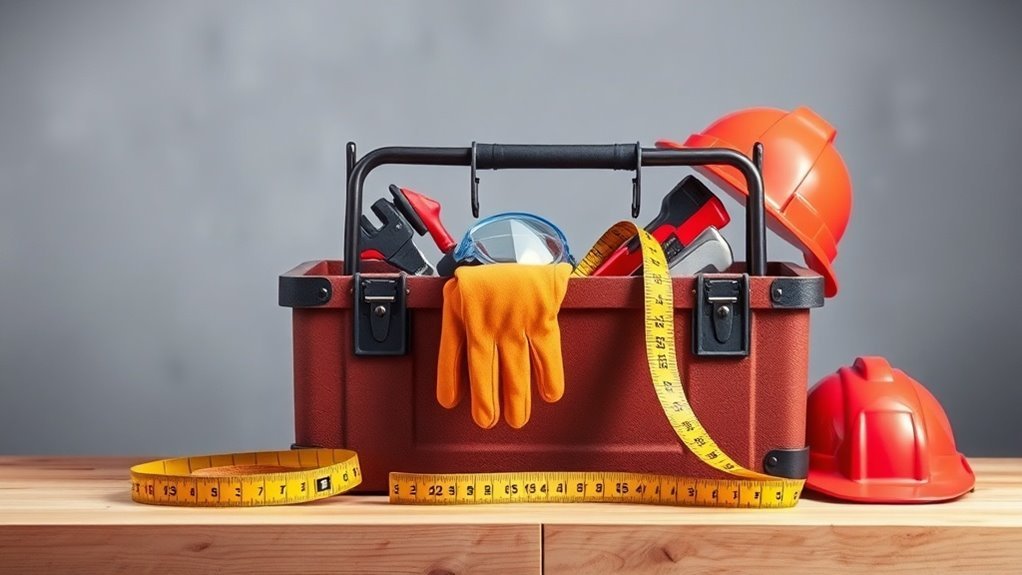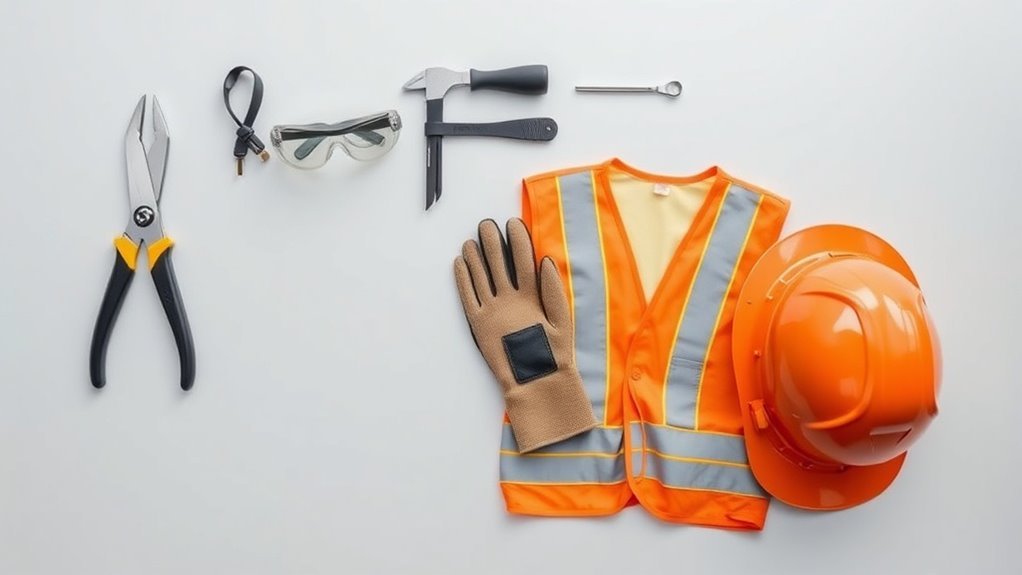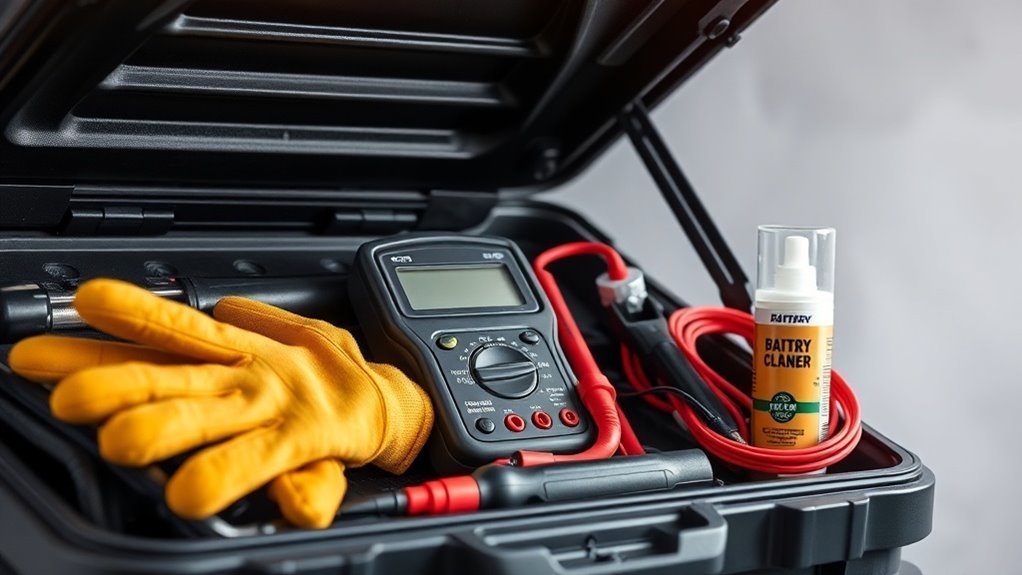Heat-Resistant Gear for High-Temperature Work
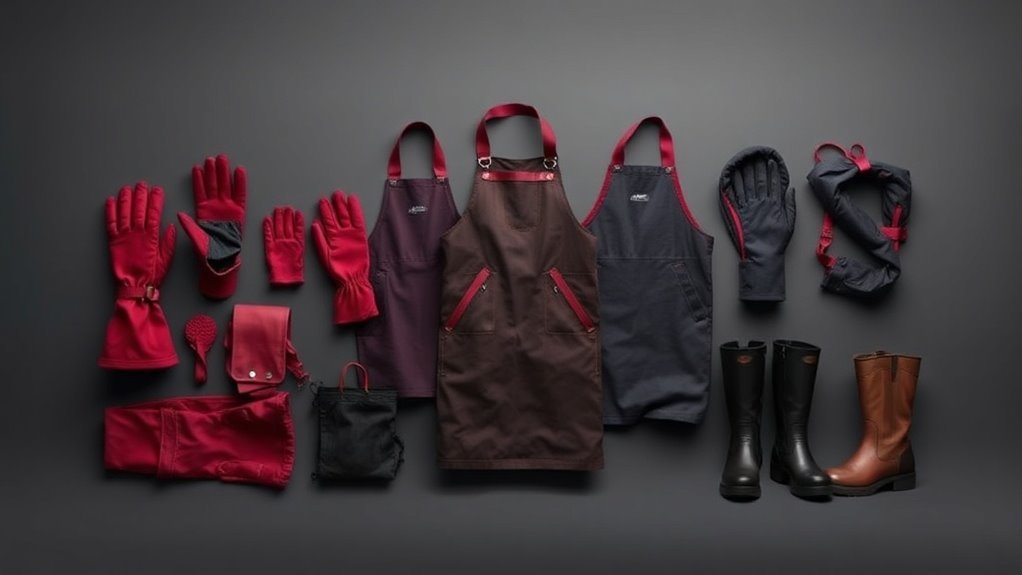
If you’re working in high-temperature environments, heat-resistant gear is a must for your safety and comfort. Look for flame-resistant coveralls, heat-resistant gloves, and specialized boots with heat-resistant soles. Essential features include durable materials like Nomex, breathability for temperature regulation, and a good fit for movement. Regular maintenance will keep your gear functional. By understanding the types and needs, you can make informed choices to stay safe and protected in extreme conditions. There’s more to explore about gear essentials.
Key Takeaways
- Select gear made from materials like Nomex or aramid for optimal heat resistance in high-temperature environments.
- Choose flame-resistant coveralls or separate flame-retardant garments for comprehensive body protection.
- Ensure a good fit for your gear to allow freedom of movement while maintaining safety standards.
- Regular inspections and proper cleaning according to manufacturer guidelines enhance the durability and effectiveness of heat-resistant clothing.
- Consider additional protective equipment, such as heat-resistant gloves and respirators, for comprehensive safety in extreme conditions.
Types of Heat-Resistant Clothing
When you’re working in high-heat environments, choosing the right heat-resistant clothing is essential for both safety and comfort.
There are several types of heat-resistant clothing that you should consider. First, flame-resistant coveralls offer full-body protection, shielding you from direct flames and heat.
Then, there are flame-retardant shirts and pants, which can be worn separately but still provide ample protection.
Don’t overlook head protection; balaclavas and helmets specifically designed for high temperatures are critical.
Gloves also play an important role, so opt for heat-resistant gloves that allow dexterity while protecting your hands.
Finally, footwear matters too; specialized boots with heat-resistant soles can prevent burns and guarantee a safe working environment.
Investing in quality gear is a must for your well-being.
Essential Features of Heat-Resistant Gear
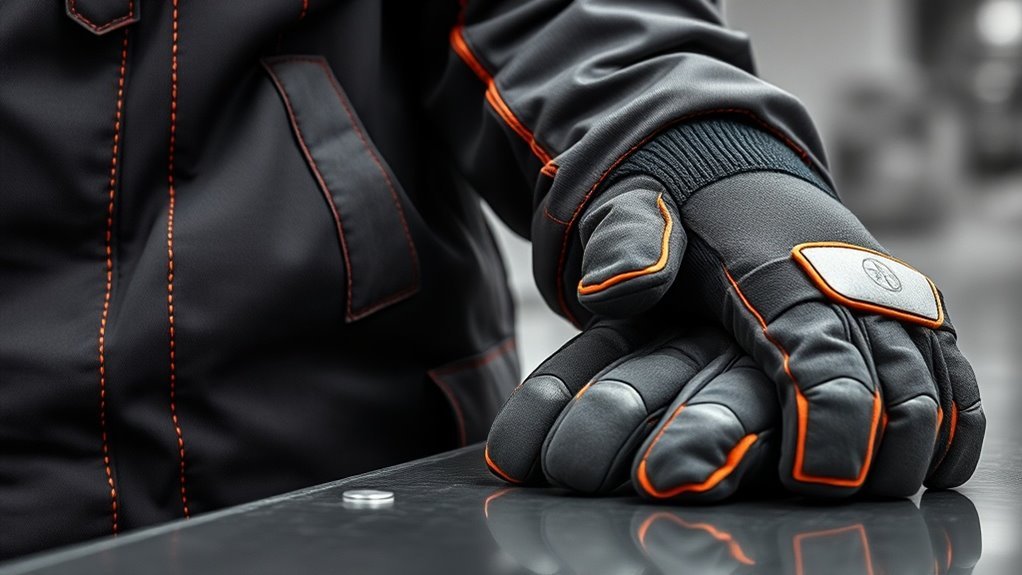
Choosing the right heat-resistant clothing is just the first step; understanding the key features of that gear is equally important.
First, look for materials like aramid and Nomex that offer excellent heat resistance. Breathability is critical too, as it helps regulate your body temperature during intense work.
You’ll want gear with reinforced seams to enhance durability and prevent wear and tear. Also, make sure the clothing provides a good fit; it shouldn’t be too loose or tight so you can move freely.
Consider reflective properties for added safety, allowing visibility in high-heat environments.
Finally, don’t forget about ease of maintenance, as keeping your gear clean and functional is essential for ongoing protection and comfort on the job.
Protective Equipment for Extreme Environments
While working in extreme environments, it’s essential to have the right protective equipment to safeguard against various hazards. Wearing gear specifically designed for intense heat and flames can make a significant difference in your safety and comfort. It’s not just about compliance—it’s about your well-being.
| Hazard | Protective Equipment | Emotional Impact |
|---|---|---|
| High Temperatures | Heat-Resistant Suits | Comfort & Confidence |
| Toxic Fumes | Respirators | Safety & Security |
| Sharp Objects | Cut-Resistant Gloves | Peace of Mind |
Finding the right tools empowers you to tackle challenges head-on, ensuring you can focus on the task rather than worry about potential dangers. Don’t compromise on your safety!
Selecting the Right Gear for Your Needs
Selecting the right gear is essential to guaranteeing your safety and comfort on the job.
You’ll want to take into account a few key factors when choosing your heat-resistant gear:
- Temperature Rating: Verify the gear’s specifications meet or exceed the temperatures you’ll be exposed to.
- Material: Choose fabrics like Nomex or Kevlar, known for their heat resistance and durability.
- Fit and Comfort: Make certain the gear allows for movement and isn’t overly tight or loose.
- Certification: Look for gear that meets industry standards, confirming it’s tested for safety in high-temperature environments.
Maintenance and Care for Heat-Resistant Equipment
Proper maintenance and care of your heat-resistant equipment can greatly extend its lifespan and guarantee maximum performance.
Start by regularly inspecting your gear for any signs of wear or damage. If you notice any fraying, tearing, or discoloration, it might be time for repair or replacement.
Clean your equipment according to manufacturer guidelines—use appropriate solvents or detergents that won’t compromise the material. After cleaning, verify everything is thoroughly dried to prevent mold or mildew.
Store your gear in a cool, dry place, away from direct sunlight and extreme temperatures.
Finally, always follow care instructions specific to your equipment type, as this will help maintain its heat resistance and functionality over time.
Taking these steps will keep you safe and effective in high-temperature environments.
Questions
Can I Wear Regular Clothing Underneath Heat-Resistant Gear?
Yes, you can wear regular clothing underneath heat-resistant gear, but it’s best to choose natural fibers that won’t melt. Avoid synthetic materials, as they can pose safety risks in high-heat environments. Stay safe and comfortable!
How Long Does Heat-Resistant Gear Typically Last?
You might think heat-resistant gear wears out quickly, but it typically lasts several years with proper care. Keep it clean and inspect for damage, and you’ll enjoy its protection for a long time.
Are There Heat-Resistant Options for Specific Industries?
Yes, there’re heat-resistant options tailored for specific industries, like welding, cooking, and metalworking. Each industry’s unique hazards demand specialized gear that offers protection against high temperatures and guarantees your safety while performing tasks.
What Are the Price Ranges for High-Quality Heat-Resistant Gear?
High-quality heat-resistant gear typically ranges from $50 to $300, depending on the materials and manufacturer. For specialized equipment, you might find prices climbing higher, but investing in safety is always worth it.
How Can I Tell if My Gear Is Still Effective?
To gauge your gear’s effectiveness, think of it as a trusty shield. Inspect for wear, tears, or discoloration. If it’s visibly damaged or doesn’t maintain temperature, it’s time to evaluate an upgrade. Stay safe!
Conclusion
To sum up, finding the right heat-resistant gear is like unearthing a hidden treasure chest that keeps you safe in extreme environments. By understanding the types, essential features, and maintenance of this gear, you’ll be well-equipped for high-temperature work. Remember, investing in quality protective equipment can mean the difference between a risky situation and a secure one. So, gear up wisely, and you’ll conquer any heat-filled challenge that comes your way!


